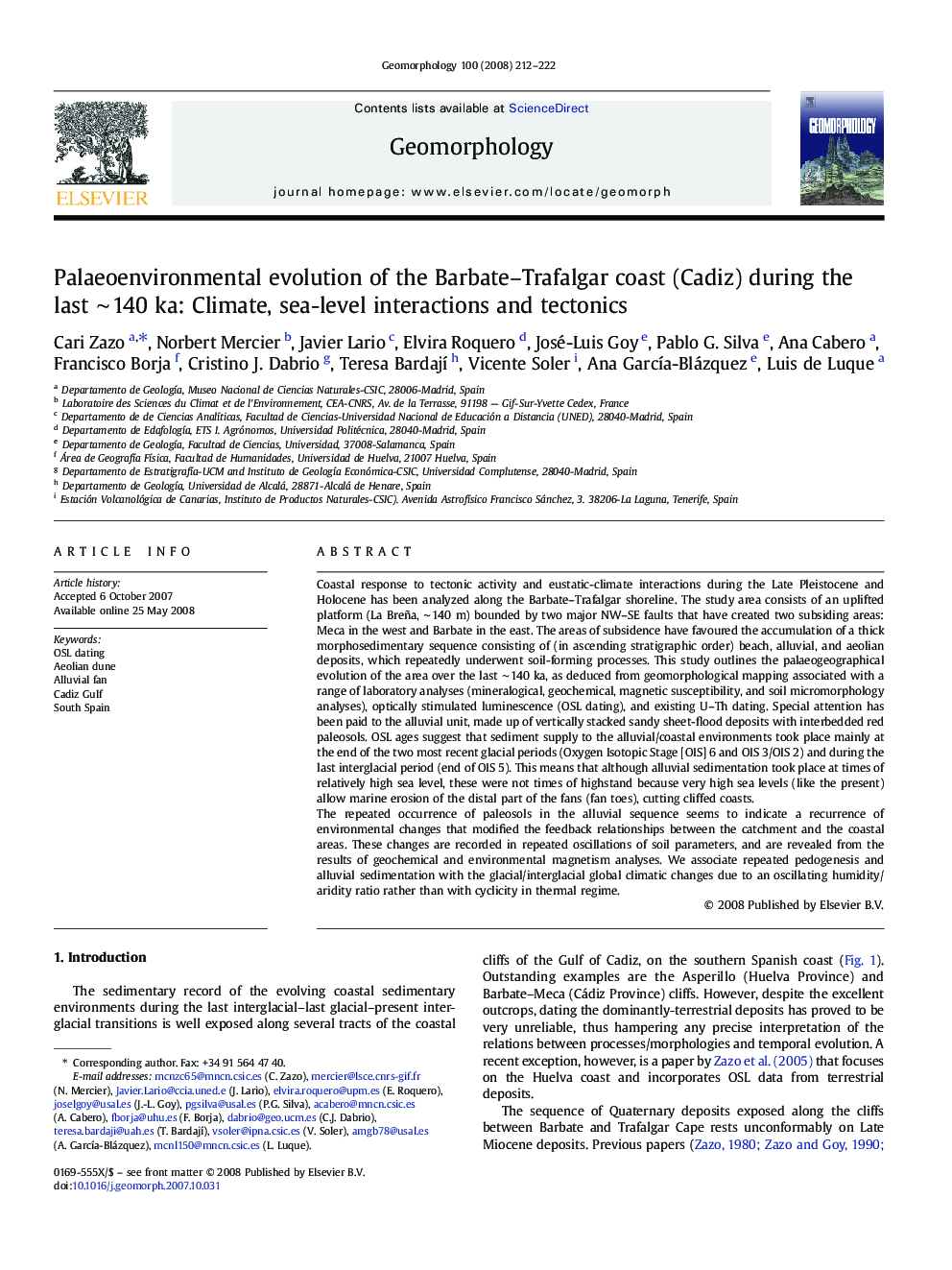| Article ID | Journal | Published Year | Pages | File Type |
|---|---|---|---|---|
| 4686681 | Geomorphology | 2008 | 11 Pages |
Coastal response to tectonic activity and eustatic-climate interactions during the Late Pleistocene and Holocene has been analyzed along the Barbate–Trafalgar shoreline. The study area consists of an uplifted platform (La Breña, ∼ 140 m) bounded by two major NW–SE faults that have created two subsiding areas: Meca in the west and Barbate in the east. The areas of subsidence have favoured the accumulation of a thick morphosedimentary sequence consisting of (in ascending stratigraphic order) beach, alluvial, and aeolian deposits, which repeatedly underwent soil-forming processes. This study outlines the palaeogeographical evolution of the area over the last ∼ 140 ka, as deduced from geomorphological mapping associated with a range of laboratory analyses (mineralogical, geochemical, magnetic susceptibility, and soil micromorphology analyses), optically stimulated luminescence (OSL dating), and existing U–Th dating. Special attention has been paid to the alluvial unit, made up of vertically stacked sandy sheet-flood deposits with interbedded red paleosols. OSL ages suggest that sediment supply to the alluvial/coastal environments took place mainly at the end of the two most recent glacial periods (Oxygen Isotopic Stage [OIS] 6 and OIS 3/OIS 2) and during the last interglacial period (end of OIS 5). This means that although alluvial sedimentation took place at times of relatively high sea level, these were not times of highstand because very high sea levels (like the present) allow marine erosion of the distal part of the fans (fan toes), cutting cliffed coasts.The repeated occurrence of paleosols in the alluvial sequence seems to indicate a recurrence of environmental changes that modified the feedback relationships between the catchment and the coastal areas. These changes are recorded in repeated oscillations of soil parameters, and are revealed from the results of geochemical and environmental magnetism analyses. We associate repeated pedogenesis and alluvial sedimentation with the glacial/interglacial global climatic changes due to an oscillating humidity/aridity ratio rather than with cyclicity in thermal regime.
